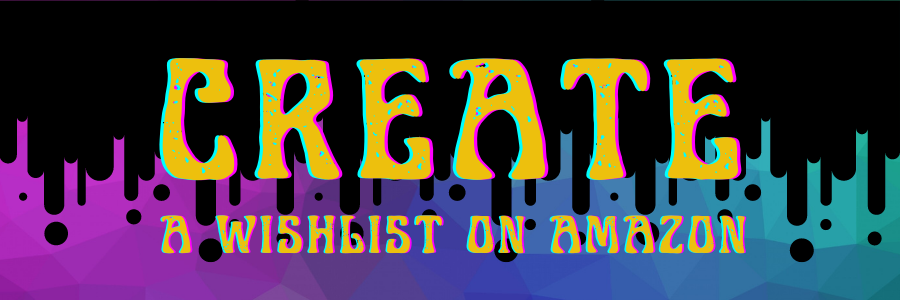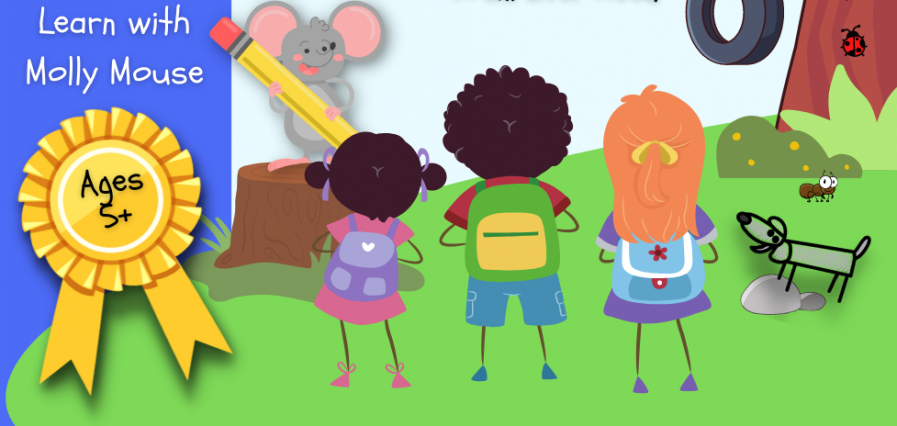Cursive is a foundational skill, but many schools no longer teach it to their students. Although it may seem like cursive is from a different era—a time when people communicated via letter and didn’t have technology at their fingertips—it’s still important for children to learn today.
Developing a legible cursive handwriting style certainly has great aesthetic value, but it also has numerous mental, physical, social, and practical benefits.
Improved Neural Connections

Many students today spend the majority of their day typing, which cannot stimulate the brain in ways that cursive handwriting can. Cursive handwriting helps build new neural pathways in the brain, increases mental viability, and improves the dynamic interplay of the left and right cerebral hemispheres.
“Pictures of brain activity have illustrated that sequential finger movements used in handwriting activated massive regions of the brain involved in thinking, language, and working memory. Handwriting differs from typing because it requires executing sequential finger strokes to form a letter, whereas keyboarding only involves touching a key.”
Virginia Berninger
Researcher and Professor at the University of Washington
Improved Ability to Read Cursive

Cursive writing is utilized extensively throughout our society. Many historical documents are written in cursive. Sadly, when individuals cannot read cursive, they are cursively illiterate in their own language. The simple task of reading a birthday card from grandma becomes impossible. The instructions written in cursive by a manager appear to be written in a foreign language.
Increased Writing Speed

Printing consists of many start-and-stop strokes, while the connectivity of cursive handwriting is much simpler and faster to write. Attention span has also been shown to increase with increased writing speed. This encourages greater amounts of writing due to the elevated continuity and fluidity in writing.
Increased Retention

Many studies have shown that college-aged students that reproduce a paragraph in cursive, instead of printing or typing, recall the information more effectively one week later. The simple act of taking notes by hand encourages the student to process the information more thoroughly. This leads to greater retention and a better understanding of the material.
Ease of Learning

Letter formation in printing is more difficult due to the frequent start-and-stop strokes. Cursive is comprised of one fluid motion that is easier to maintain. Children with learning challenges such as dyslexia, dysgraphia, and difficulties with attention have an easier time learning cursive. Some printed letters are easily confused, like b and d.
Improved Fine Motor Skills

The natural repetition that occurs during cursive writing practice forms important fine motor skills that transfer to many other everyday tasks young children are learning. Many homeschoolers begin teaching cursive handwriting in kindergarten, both before teaching printing and in conjunction with printing practice.
“Cursive handwriting naturally develops sensory skills. This physical and spatial awareness allows them to write, but more importantly, builds the neural foundation of sensory skills needed for a myriad of everyday tasks such as buttoning, fastening, tying shoes, picking up objects, copying words from blackboards, and most importantly, reading.”
Candace Meyer, CEO, Minds-in-Motion, Inc.
Cutting Cursive, The Real Cost.
Improved Legibility and Spelling Ability
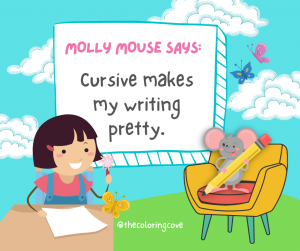
Cursive writing is generally easier to read. Cursive forces the writer to write from left to right with letters that join in the proper sequence and with consistent spacing. Repeating these sequences with practice develops a muscle memory that improves spelling. The same theory applies to pianists that practice repeated hand movements and patterns.
Increased Self-Discipline
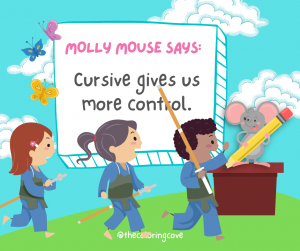
As we discussed above, cursive develops fine motor skills and increased hand-eye coordination through its complexity. This complexity helps develop self-discipline with continued practice and concentration.
Higher Quality Signature
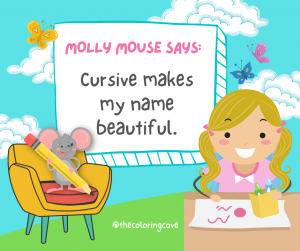
The attractiveness, fluidity, and legibility of a signature are improved with the use of cursive handwriting. There are many occasions throughout life that require us to sign our names on documents. A signature written in cursive is not only more attractive but also more appropriate.
Increased Self-Respect
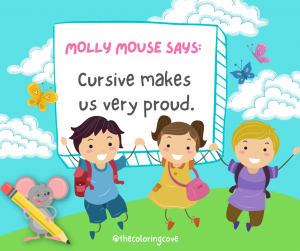
Handwriting is a crucial life skill. Confidence to communicate freely with the written word is obtained when the ability to write clearly and fluidly is mastered. This confidence leads to increased self-respect and self-confidence in many areas of life.
If you live outside of one of the 21 states that require cursive, you still have options for learning the skill. Some students are taking matters into their own hands, reviving cursive through clubs, competitions, and free time.
The New York Times reported on a 10-year-old who won a national competition for his cursive writing, after being self-taught from a workbook rather than at school. If he can do it, so can you!
At Tea & Bri Publishing we strive to be your go-to source for all things learning and creating. “The Only Cursive Book You’ll Ever Need,” is designed to be an all-inclusive workbook to teach your child cursive in an easy and fun format at home. Starting with pre-cursive skills, then moving on to learn lowercase and uppercase letters, numbers, and words. Concluding with a section at the end filled with entertaining sentence practice designed to keep kids engaged while cementing the lessons learned.
Go to the Pre-Cursive Scribbles Activities >
<Go to Tea & Bri Publishing Home Page
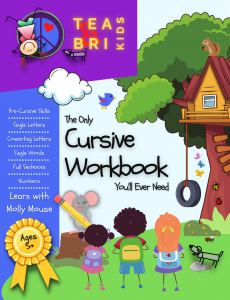
Get your copy of
The Only Cursive Workbook You’ll Ever Need
here >

See more books by
Tea & Bri Publishing House
here >

See more books by
Tea & Bri Publishing House
here >

